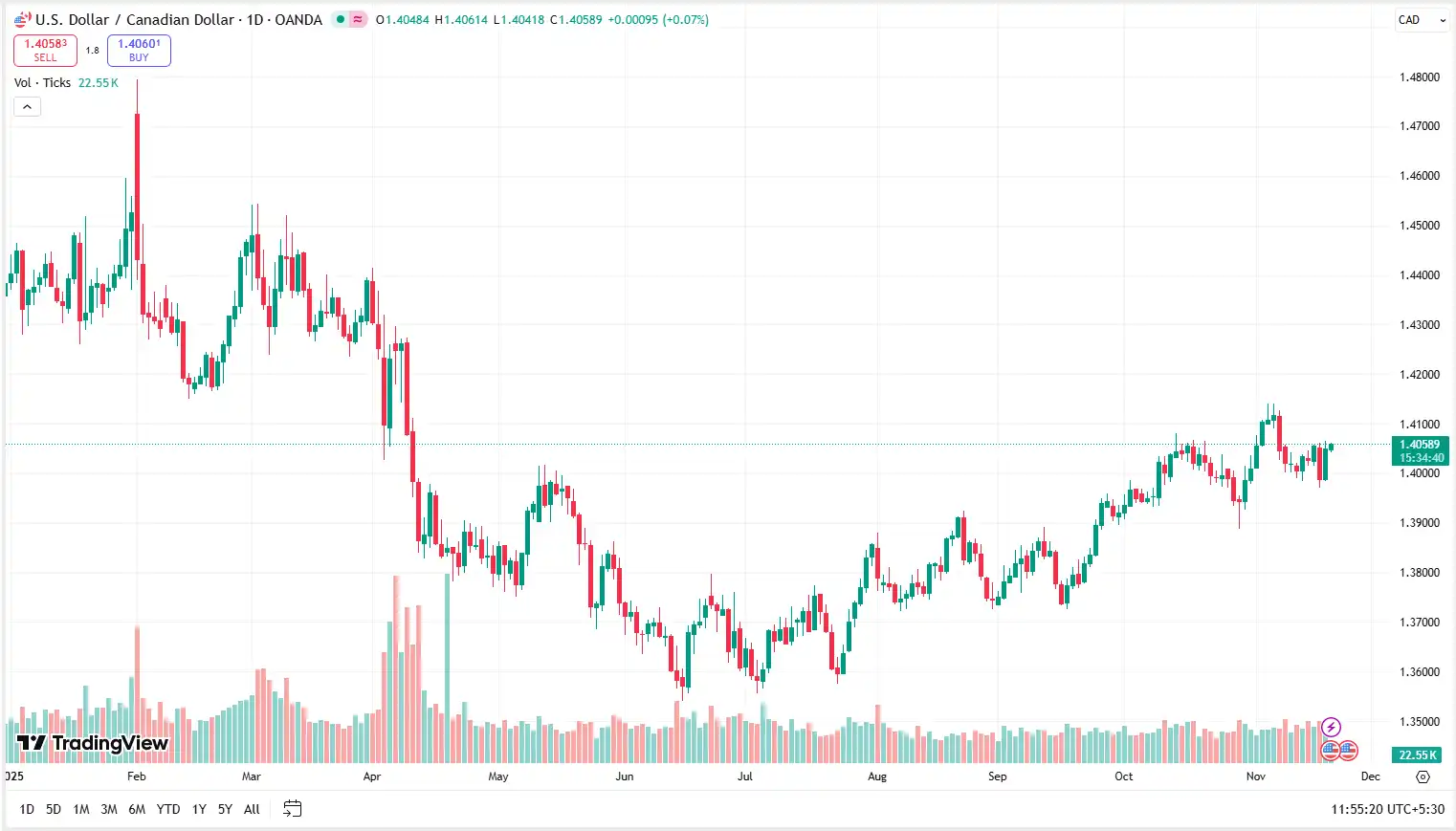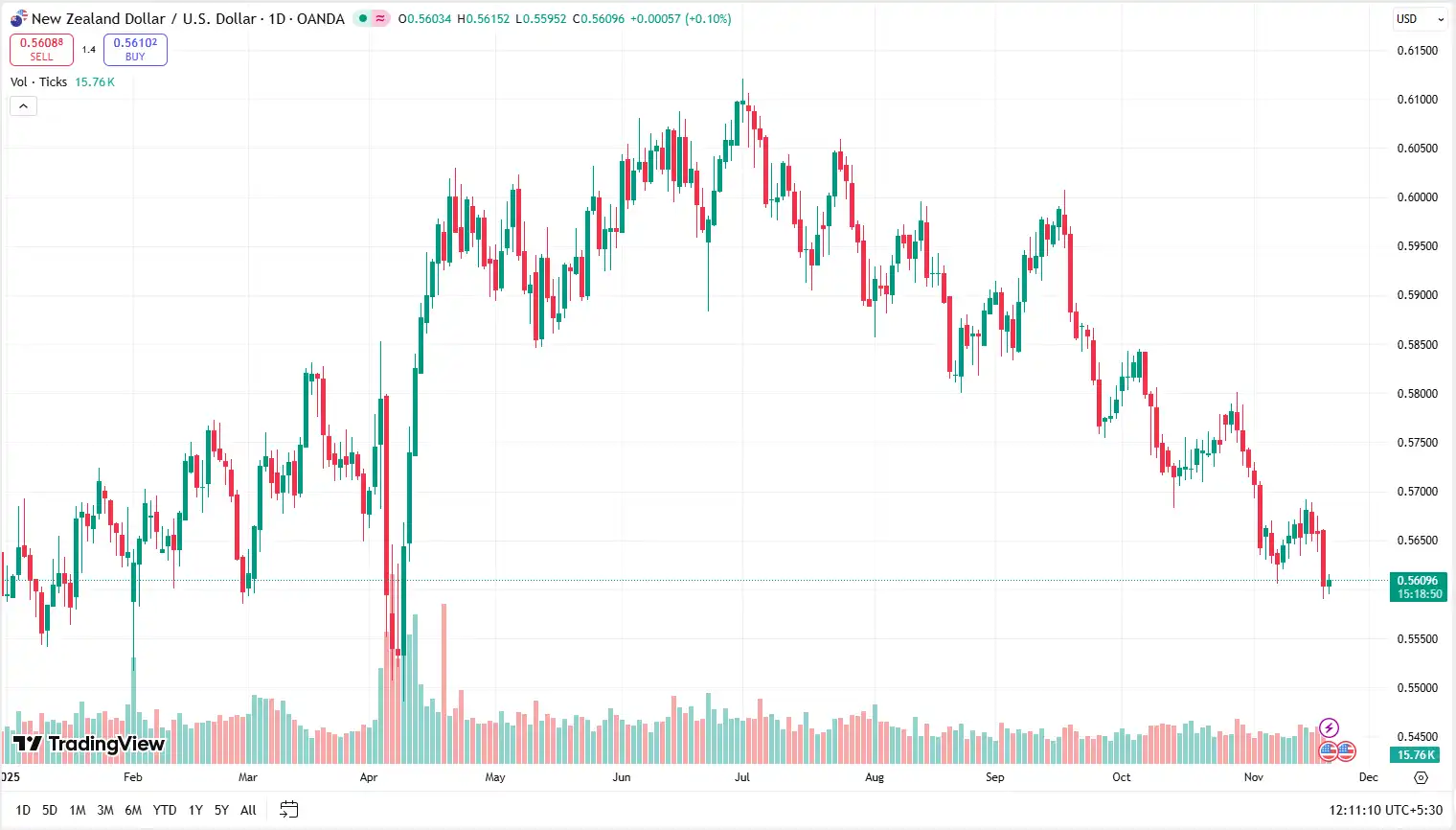GBP/USD edged higher, trading around 1.3060[1] in Thursday's early European session after four consecutive daily declines. The rebound in the pair is believed to indicate a slight pull back in the US dollar[2] as markets anticipate major US labour information later in the session. As volatility levels are likely to increase in the run-up to delayed release of September Nonfarm Payrolls[3], traders do not seem to want to carry on buying the US dollar before the numbers. In the meantime, the two are coalescing at the psychological level of 1.3000, but the force is weak.
Market reports point out that the recent UK’s CPI report[4] revealed that the headline inflation in the country has eased to 3.6%/year-on-year in October, as expected. Although the milder print has given a temporary relief by alleviating imminent concerns of continuing inflation, it has also given credence to the markets that the Bank of England (BoE)[5] can start reducing its rates as early as December. This policy perspective removes upside risks on the pound, especially with investors evaluating the effects of the upcoming government budget on 26 November, and its possible effect on the BoE policy direction.
Market commentators[6] point out that in the Atlantic, focus now turned to the late September jobs report in the US which had been delayed by the recent government shutdown of 43 days. The unanimous predictions indicate a tepid increase of 50,000 jobs with the unemployment rate projected to stand at 4.3%[7] and wage increases will be somewhat constrained. Any adverse surprise would probably undermine the US dollar[8], which would provide short-term defence to GBP/USD. On the other hand, an unexpected read could swiftly reverse hopes of a healthier labour market, dragging the two down again.
Analysts[9] point out that the bigger story is still influenced by the changing Federal Reserve (Fed) expectations, especially following the FOMC minutes in which the FOMC split on the decision of December was revealed. Although a majority of the policy-makers also tend to lean towards a further relaxation, the risk of a long standstill may be eliminated. Consequently, GBP/USD[10] might be likely to be supported by short-term dips, however, the long-term risks of the pound remain as the BoE has been dovish, and uncertainty remains as to the future economic course of the UK. Given the cautious market tone and lingering policy uncertainty, the GBP/USD exchange rate is likely to remain vulnerable to shifts in both Fed and BoE expectations.

USD/CAD Steadies as Traders Await Key Data
The USD/CAD pair traded steadily near 1.4060[11] in Thursday's early European hours, with price action holding within a tight range as market participants await fresh directional cues from the upcoming US Nonfarm Payrolls release. The pair is believed to have demonstrated a firm bid tone in the recent sessions, pegged by a widely resolute US dollar[12] and less aggressive crude oil prices, which remain to support the short-term upside momentum. Nevertheless, traders are hesitant before the major US labour figures, which may put expectations back on Fed policy in the next few months.
Market reports[13] indicate that the focus has shifted to the late September US employment data, with economists predicting a small 50,000 growth in payrolls and no change in the unemployment rate of 4.3%. Surprisingly weak numbers would solidify indications of a decelerating US economy and could rekindle anticipation of a December rate cut[14], which has already dropped dramatically by 63% to 33% in the last week. Weaker job data would probably put pressure on the US Treasury yields[15], and pressure the greenback, which would put a headwind on the additional gains of USD/CAD.
Market commentators[16] note that the Canadian dollar is still bound by renewed weakness in crude oil, after reports of a possible US plan to end the Russia-Ukraine dispute. Being the largest export in Canada, falling oil prices, still serve as a drag to the Canadian currency[17] which is hampered in recovering even as the external influence to the US dollar swings. The dynamic offers a positive backdrop to USD/CAD in the short-term, retaining buyers in power over the imminent support areas.
Analysts[18] suggest that in the future, the medium-term horizon of the pair is vulnerable to changing trends of US data. In case future releases support the story of a decelerating US economy, anticipations of Fed relaxation are bound to accumulate, cutting yield differentials and imposing downside risks on USD/CAD[19] against prevailing supportive considerations. Overall, the USD/CAD exchange rate remains sensitive to shifting US data and evolving Fed expectations.

NZD/USD Edges Higher Amid Shifting Policy Expectations
The NZD/USD pair attempted to stabilise after recent losses, trading around 0.5610[20] Thursday's early European session. The rebound is believed to have indicated a slight improvement in risk sentiment, yet upside momentum was restrained as traders re-evaluate the outlook of the policy of the Reserve Bank of New Zealand (RBNZ)[21]. As anticipation of an imminent reduction in the rate gains momentum, the New Zealand dollar is still under the head winds, and the pair is stagnated in spite of the intraday bids.
Market reports note that the domestic fundamentals in New Zealand[22] are still soft, which supports the downside pressure on the kiwi. Increasing the unemployment rate to 5.3% in the September quarter is an indicator of additional labour market slack[23], and a slowing economic background and falling inflation expectations intensifies fears over underlying economic vulnerability. These have intensified the anticipations of prior policy relaxation by the RBNZ[24] that can limit the capacity of the New Zealand dollar to build a sustained recovery notwithstanding the short-term technical relief.
Market commentators[25] note that in the meantime, the US dollar is consolidating prior to the delayed US September employment report, which will record a slight 50,000 jobs gain. An increase in wages of 0.3% month to month and the constant rate of unemployment at 4.3%[26] will be keenly observed in regard to the short-term position of the Fed. Recent FOMC minutes revealed internal rifts regarding the timing of rate cuts, so that the US dollar[27] remains vulnerable to incoming data and gives room to instability in case labour market data comes in unpleasantly on either side.
Analysts suggest that a poorer than expected US jobs report[28] may sabotage greenback and provide temporary benefit to NZD/USD. Nevertheless, the medium-term risks are to the negative side on behalf of the pair because the poor macroeconomic landscape and the increasing rate-cut expectations of RBNZ[29] overhang the bigger picture. Until US data offers a clearer indication of the direction of monetary policy, traders would likely continue to be wary. Given the weak domestic outlook and shifting rate expectations, the NZD/USD exchange rate is likely to remain pressured in the medium term.

EUR/USD Slides Further Amid Strengthening Dollar
The EUR/USD pair extended its decline for a fifth consecutive session on Thursday, drifting towards a near two-week low and trading around 1.1500[30] during the European session. Persistent US dollar[31] strength is believed to remain in control of price action, and the greenback has been backed up with a clear turning of the tide in interest-rate expectations. The Dollar Index[32], which has been held just short of a five month high, represents a very strong re-evaluation of Fed policy prospects and leaves the euro under constant pressure.
Market commentators[33] note that this recent repricing came after the publication of the Federal Open market committee minutes where the policymakers were inclined to leave rates steady in December. This dampened previous speculations of an early policy easing, with authorities warning[34] that it might be tempting to start the re-anchoring process once more. This has forced traders to reduce dovish Fed bets, with the market-implied price indicating a much less likely result of a December rate cut. This revaluation has strengthened dollar demand and burdened more of the near term recovery efforts by EUR/USD[35].
Market reports[36] indicate that the focus has shifted on upcoming data releases in the US, especially the upcoming September Nonfarm Payrolls report. The indicators of the labour market have become mollified in recent months, and any resurging signs of vulnerability may once again affect the rate expectations. A weaker-than-anticipated print could help cool the dollar, by providing minor-term support to EUR/USD[37]; nevertheless, strong employment data would probably underscore the existing bearish bias.
Analysts[38] suggest that medium-term euro risks in the future are skewed downwards because sentiment and risk appetite are weak. The upcoming preliminary Eurozone PMI data[39] will also be monitored by investors and may give additional information on the growth prospects of the bloc. As long as the signs of economic stabilisation are not observed in the regions, it is possible that EUR/USD will be weak, despite occasional corrective rebounds that may be seen in the short run due to the oversold state. Overall, the EUR/USD exchange rate remains vulnerable as persistent dollar strength and weak Eurozone fundamentals limit recovery prospects.

Stay Ahead in the Currency Game
Whether you're a daily FX trader or handle international transactions regularly, our 'Currency Pulse' newsletter delivers the news you need to make more informed decisions. Receive concise updates and in-depth insights directly in your LinkedIn feed.
Subscribe to 'Currency Pulse' now and never miss a beat in the currency markets!
Ready to act on today’s insights? Get a free quote or give us a call on: +44 (0)20 7740 0000 to connect with a dedicated portfolio manager for tailored support.
Important Disclaimer: This blog is for informational purposes only and should not be considered financial advice. Currency Solutions does not take into account the investment objectives, financial situation, or specific needs of any individual readers. We do not endorse or recommend any specific financial strategies, products, or services mentioned in this content. All information is provided “as is” without any representations or warranties, express or implied, regarding its accuracy, completeness, or timeliness.




